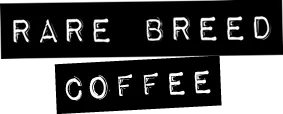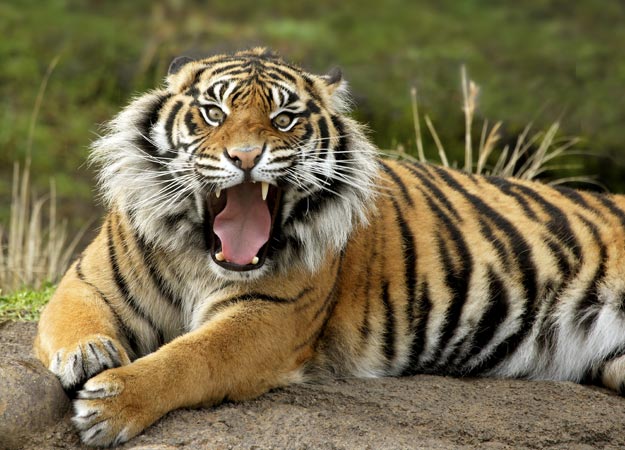Our Sumatra Mandheling IKA is an organic, shade-grown bean of the Mandheling Typica variety. Think deep, rich cocoa aroma with spicy hints; heavy body and rich flavor with a long, dry finish. It has a resonant, spicy, earthy, syrupy taste, and a weighty body in the mouth. The finish: Long, dry, robust. It is grown at an altitude of 4900 feet, semi-washed, and harvested from September to June.
Sumatra is the largest island located entirely in Indonesia (there are larger islands but they are shared with other countries). It is home to about 50 million people, but it is also home to some really interesting creatures.
The Sumatran Tiger is a rare and endangered species of tiger. It is a distinct species, different from continental tigers. There were estimated to be between 400 and 700 of them in 2008 and their numbers are not know to have grown appreciably since then. They have darker fur than the more familiar species of tigers, and thicker stripes that taper off into spots. Another unique creature (truly unique, as it only exists on the island of Sumatra) is the Sumatran Orangutan. This animal, too, is endangered, though there are many more of them than their tiger neighbors – around 7300.
While shrinking habitat is the primary poacher of the Sumatran Tigers and Orangutans, the primary poacher of the also diminishing Sumatran Rhino population is human. Only and 275 of these slightly smaller members of the rhino family are still in existence.
Thankfully, Sumatran coffee is more plentiful.
Arabica coffee production in Sumatra began in the 18th century under Dutch colonialism. In the past, Sumatra coffees have not been sold by region, because presumably the regional differences are not that distinct. Rather, the quality of the picking, preparation and processing of the coffee determines much of the cup character in this coffee. In fact, Sumatras are sold as Mandheling (Mandailing) which is simply the Indonesian ethnic group that was once involved in coffee production. The coffee is scored by defects in the cup, not physical defects of the green coffee. So a fairly ugly-looking green coffee can technically be called Grade 1 Mandheling.
Near Lake Toba in northern Sumatra, this deep and intense coffee undergoes the unusual semi-washed wet/natural process. As with other washed coffees, fermentation is complete when the mucilage or fruit surrounding the parchment has dissolved and the fruit-free parchment rinsed off. In most places, the bean is dried in the parchment and the parchment is milled off the beans when they are dry. But in Sumatra, the bean is still very wet when the parchment is hulled. The bean comes out of the parchment quite soft, white, and spongy. These wet, soft beans are then sun-dried. Typically, the drying conditions in Sumatra include on-and-off sessions of fierce tropical sun, interrupted regularly by torrential thunder showers. This slow inconsistent drying is in large part what provides the essence of a Sumatra Mandheling, both in flavor and appearance.

